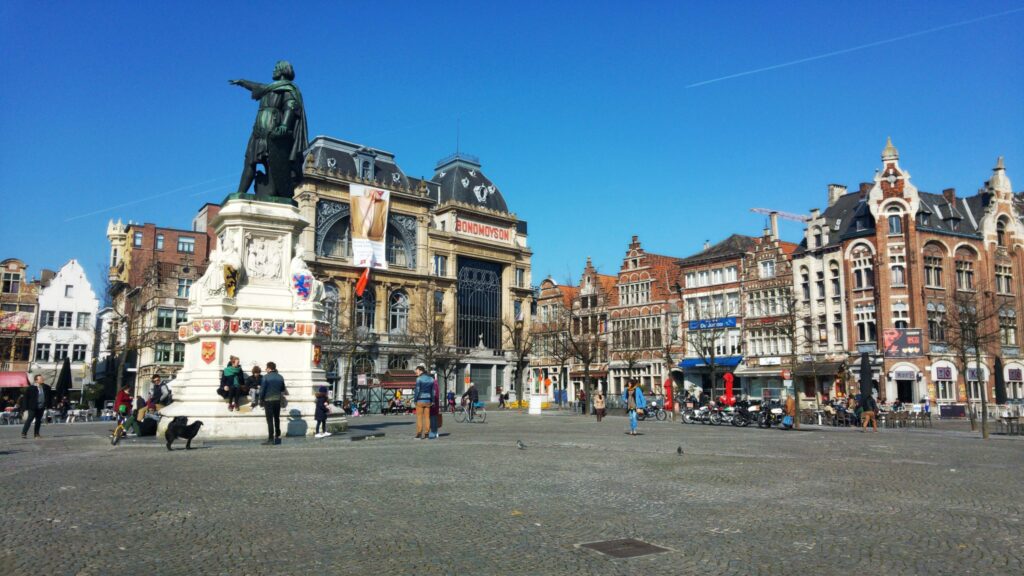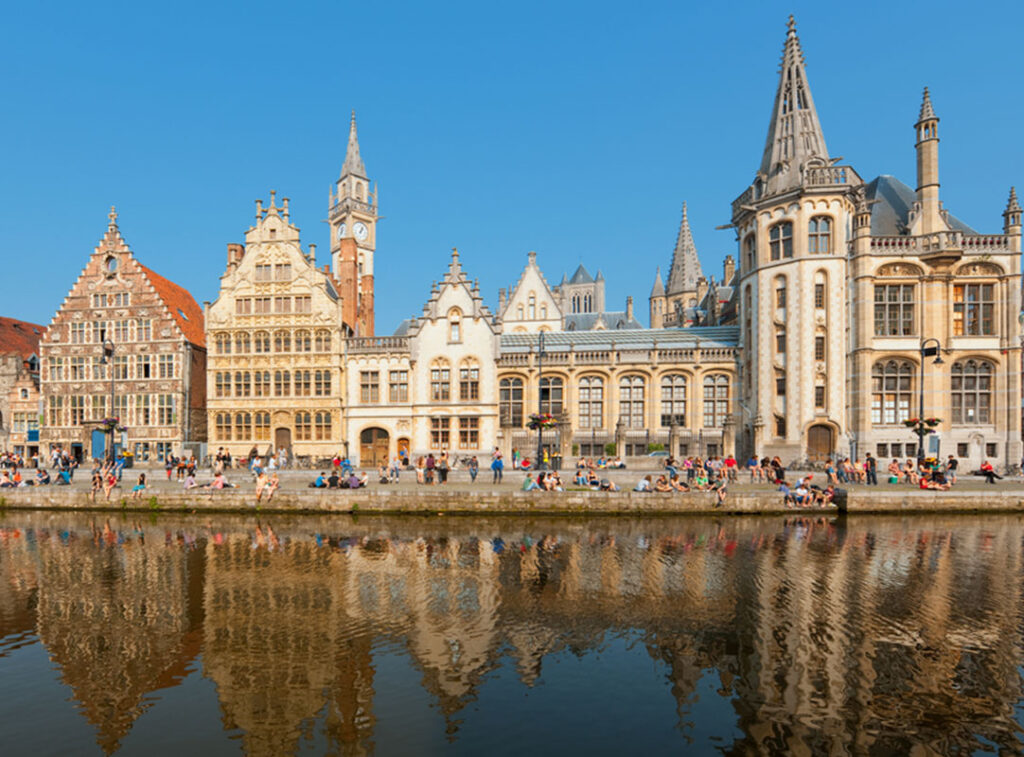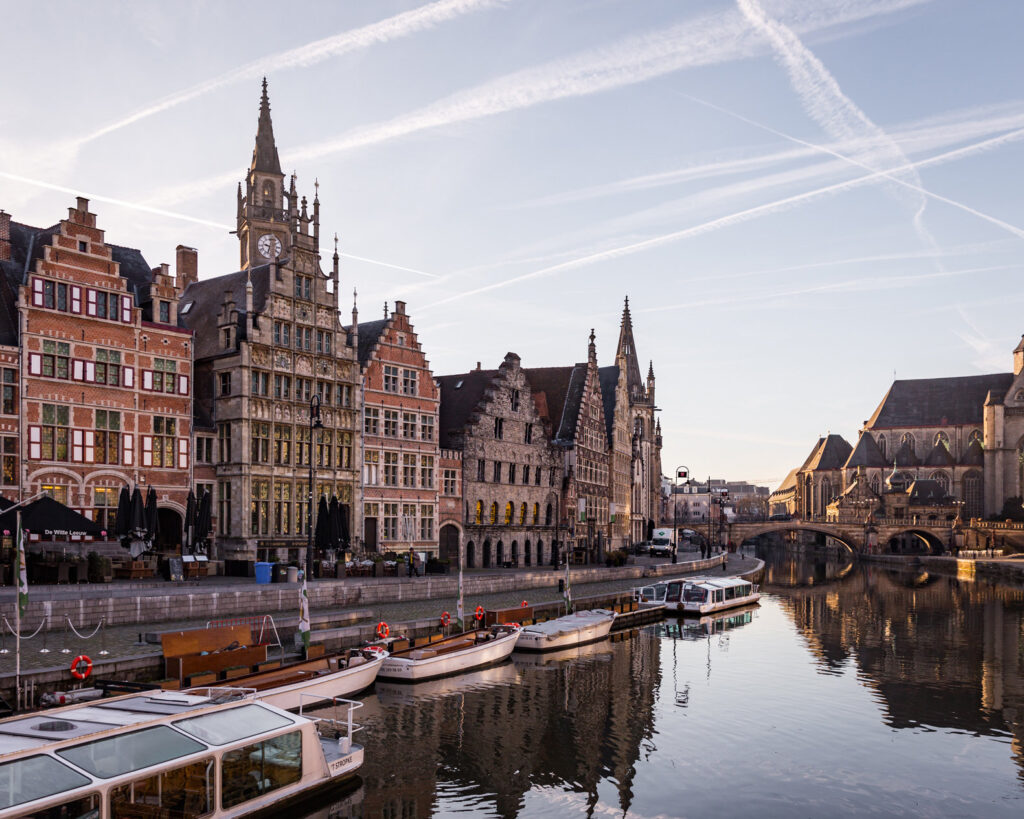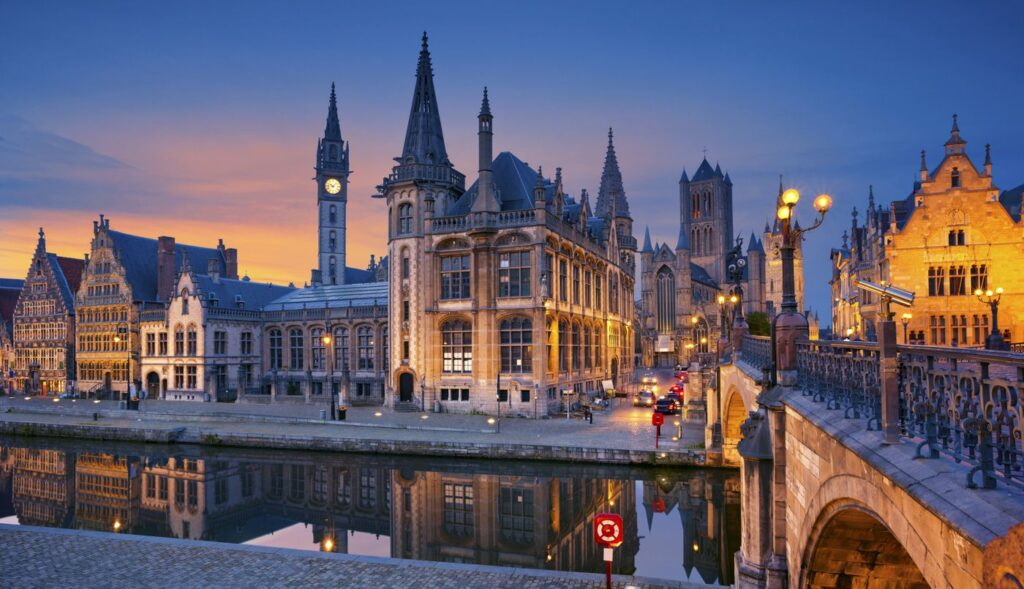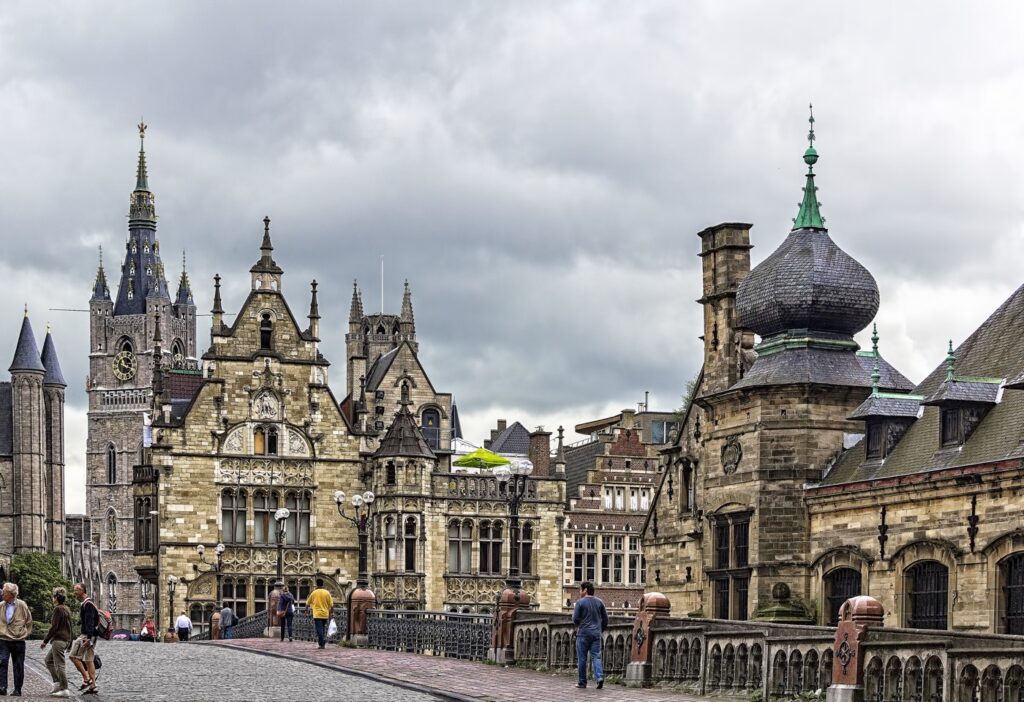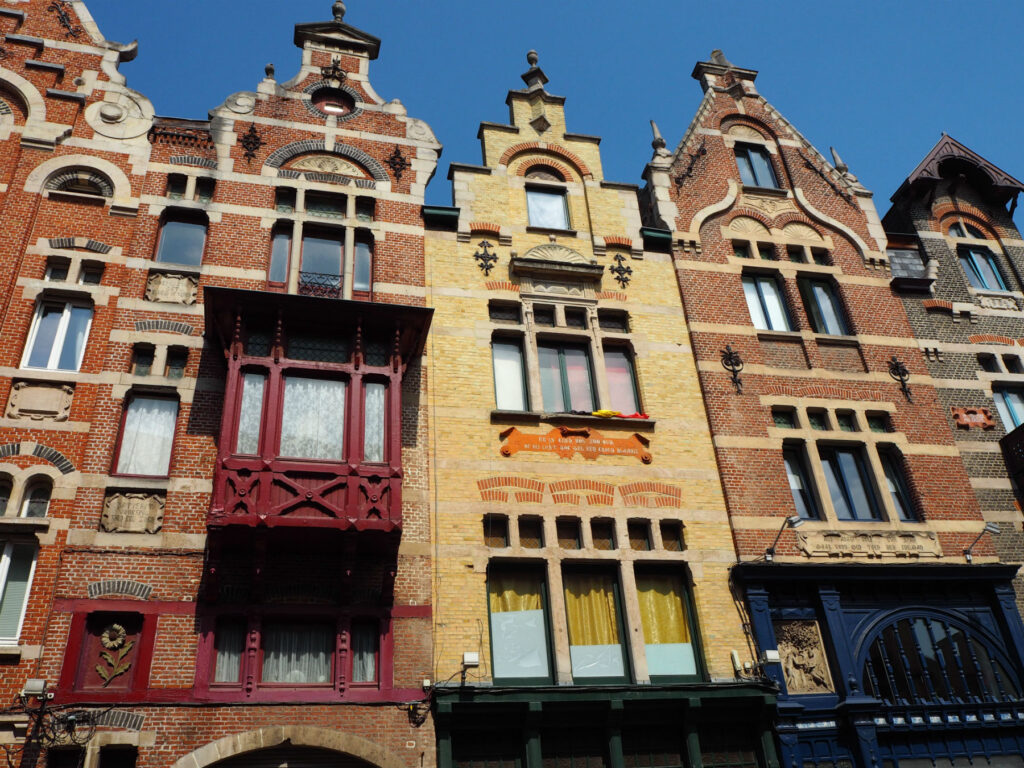Ghent is a city and a municipality in the Flemish Region of Belgium. It is the capital and largest city of the East Flanders province, and the third largest in the country, exceeded in size only by Brussels and Antwerp. It is a port and university city. The ten-day-long Ghent Festival (Gentse Feesten in Dutch) is held every year and attended by about 1–1.5 million visitors.
| Country | Belgium |
|---|---|
| Community | Flemish Community |
| Region | Flemish Region |
| Province | East Flanders |
| Arrondissement | Ghent |
| Government | |
| • Mayor (list) | Mathias De Clercq |
| • Governing party/ies | sp.a-Groen, Open VLD, CD&V |
| Area | |
| • Total | 156.18 km2 (60.30 sq mi) |
| Population | |
| • Total | 260,341 |
| • Density | 1,700/km2 (4,300/sq mi) |
Ghent is known for its cultural landmarks and punk rock music industry.
Sights
Much of the city’s medieval architecture remains intact and is remarkably well preserved and restored. Its centre is a carfree area. Highlights are:
- the Saint Bavo Cathedral with the Ghent Altarpiece,
- the belfry, the Gravensteen castle, and the splendid architecture along the old Graslei harbour.
- Saint-Jacob’s church,
- Saint-Nicolas’ church,
- Saint Michael’s church
- St. Stefanus.
- Ghent Altarpiece, a 15th-century painting by Hubert and Jan Van Eyck in Saint Bavo Cathedral.
In the 19th century Ghent’s most famous architect, Louis Roelandt, built the university hall Aula, the opera house and the main courthouse. Highlights of modern architecture are the university buildings (the Boekentoren or Book Tower) by Henry Van de Velde. There are also a few theatres from diverse periods.
Museums
Important museums in Ghent are:
- the Museum voor Schone Kunsten (Museum of Fine Arts), with paintings by Hieronymus Bosch, Peter Paul Rubens, and many Flemish masters;
- the SMAK or Stedelijk Museum voor Actuele Kunst (City Museum for Contemporary Art),
- the Design Museum Gent
- the Huis van Alijn (House of the Alijn family) was originally a beguinage and is now a museum for folk art where theatre and puppet shows for children are presented.
- The Museum voor Industriële Archeologie en Textiel or MIAT displays the industrial strength of Ghent with recreations of workshops and stores from the 1800s and original spinning and weaving machines that remain from the time when the building was a weaving mill.
Restaurants and culinary traditions
In Ghent and other regions of East-Flanders, bakeries sell a donut-shaped bun called a “mastel” (plural “mastellen”), which is basically a bagel. “Mastellen” are also called “Saint Hubert bread”, because on the Saint’s feast day, which is 3 November, the bakers bring their batches to the early Mass to be blessed. Traditionally, it was thought that blessed mastellen immunized against rabies.
Other local delicacies are the praline chocolates from local producers such as Leonidas, the cuberdons or ‘neuzekes’ (‘noses’), cone-shaped purple jelly-filled candies, ‘babelutten’ (‘babblers’), hard butterscotch-like candy, and of course, on the more fiery side, the famous ‘Tierenteyn’, a hot but refined mustard that has some affinity to French ‘Dijon’ mustard.
Stoverij is a classic Flemish meat stew, preferably made with a generous addition of brown ‘Trappist’ (strong abbey beer) and served with French fries. ‘Waterzooi’ is a local stew originally made from freshwater fish caught in the rivers and creeks of Ghent, but nowadays often made with chicken instead of fish. It is usually served nouvelle-cuisine-style, and will be supplemented by a large pot on the side.
The city promotes a meat-free day on Thursdays called Donderdag Veggiedag with vegetarian food being promoted in public canteens for civil servants and elected councillors, in all city funded schools, and promotion of vegetarian eating options in town (through the distribution of “veggie street maps”). The traditional confectionery is the cuberdon (also known as neuzekes or little noses). These are conical sweets with a soft centre, usually raspberry but other flavours can be found on the many street stalls around the city.
Festivities
The city is host to some big cultural events such as the Gentse Feesten, I Love Techno in Flanders Expo, the “10 Days Off” musical festival, the International Film Festival of Ghent (with the World Soundtrack Awards) and the Gent Festival van Vlaanderen. Also, every five years, an extensive botanical exhibition (Gentse Floraliën) takes place in Flanders Expo in Ghent, attracting numerous visitors to the city.
The Festival of Flanders had its 50th celebration in 2008. In Ghent it opens with the OdeGand City festivities that takes place on the second Saturday of September. Some 50 concerts take place in diverse locations throughout the medieval inner city and some 250 international artists perform.
Natur
The numerous parks in the city can also be considered tourist attractions. Most notably, Ghent boasts a nature reserve and a recreation park (Blaarmeersen, 87 hectares).


